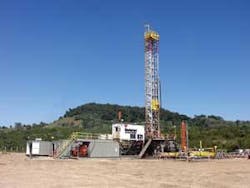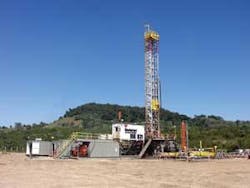Latin American oil, gas policies remain in flux
Oil and gas producing countries in Latin America have adopted diverse approaches to energy policy and the extent to which international companies are allowed to invest or operate in conjunction with the various national oil companies.
Rice University’s James Baker Institute hosted a Feb. 26 conference in which speakers discussed Latin America’s changing energy landscape, which continues to be heavily influenced by economics, geopolitics, and sometimes very localized politics.
Privatization and deregulation were common in the early 1990s as Latin America governments tended to allow increased participation by international oil and gas companies.
Bolivia and Argentina sold their state-owned oil companies while Brazil broke its monopoly. Venezuela shifted toward privatization and deregulation before reverting to resource nationalism—meaning the government sets exploration and production terms.
Mexico is the only country that remains closed to outside oil companies, although it established service contracts in recent years. Recent legal reforms might set the stage to eventually enable international operators to explore and produce in Mexico.
This article provides a brief country-by-county review and examines possible scenarios for energy policy in Mexico, Brazil, Venezuela, and Argentina.
Mexico production dips
Mexico needs to offset declining production in Cantarell field and elsewhere.
Recent energy reform legislation reportedly broadens the flexibility with which state-run Petroleos Mexicanos can arrange contracts.
Contractors and international oil companies are waiting to see what future relationships with Pemex might emerge. Pemex was created after President Lazaro Cardenas nationalized the oil industry in 1938. It remains a monopoly today.
Increases from Chicontepec oil and gas field and Mexico’s eventual first forays in the deepwater Gulf of Mexico are expected to help build production. Pemex officials cite Chicontepec as a stop-gap measure pending future deepwater production. The field is in Veracruz and Puebla states.
Total Mexican oil production fell to an average 2.8 million b/d in 2008—the lowest level in 13 years. Pemex expects that 2009 production will average 2.85 million b/d and will return to 3 million b/d in 2015. Mexico’s production peaked at 3.4 million b/d in 2004.
Pemex expects to see deepwater production around 2015. It anticipates 92,000 b/d from deep water in 2017, Pemex Chief Executive Jesus Reyes Heroles told reporters in Houston during the Cambridge Energy Research Associates conference.
Reyes Heroles said Pemex plans to drill 27 wells in more than 1,640 ft of water in 2008-12 compared with having drilled six deepwater wells during 2004-07.
In February, Pemex announced a 170-well tender for Chicontepec. The tender’s winning bid is expected to be announced in April with work scheduled to start in May.
Chicontepec is a complicated basin where production has been slower than expected, Reyes Heroles and Veracruz Gov. Fidel Herrera Beltran both told reporters in separate visits to Houston. Beltran spoke at Rice University’s Latin American energy conference.
Chicontepec pay is an Eocene turbidite with three zones. Wells in the widespread sand are less prolific than wells elsewhere in Mexico, although researchers hope that technology can improve production rates.
Pemex said this month that Chicontepec averaged 707 operating wells in 2008 and 35 drilling rigs as of January 2009. The field’s fourth-quarter 2008 production was 30,000 b/d.
The goal is to produce some 700,000 b/d by 2017. Pemex said that as of Dec. 31, 2008, Chicontepec had estimated proved reserves of 668 million boe, probable reserves of 8.8 billion boe, and possible reserves of 7.9 billion boe.
Brazil’s consistent policy
Two consecutive Brazilian presidents maintained flexible oil and gas regulations and partial privatization of Petroleos Brasileiro SA (Petrobras), said David R. Mares, Baker Institute scholar and a political science professor at the University of California, San Diego.
Former President Fernando Henrique Cardoso established an energy policy that current President Luiz Inacio Lula da Silva supports, Mares said.
Both Cardoso and Lula sought to attract energy investors and to pass along some energy revenues to Brazil’s social programs. Lula took office Jan. 1, 2003, and was reelected in 2006, extending his term until Jan. 1, 2011.
“We don’t know what is going to happen in Brazil…what combination of privatization and regulatory reforms will provide the best answer,” Mares said. “Total privatization for Brazil is not in the cards.”
He described Brazil as “very high” on resource nationalism after the mid-1970s. Constitutional reforms in 1995-97 moved Brazil away from resource nationalism. Energy security was a difficult issue in 2002, said Mares, who believes Brazil moved “a little more toward energy nationalism” during 2008. Currently, the Brazilian government is examining how to regulate exploration and drilling in a presalt region off Brazil. Lula commissioned a task force to make recommendations.
Separate from the Rice conference, Brazilian attorney Luiz Antonio Maia Espinola de Lemos foresees two possible scenarios:
- The government could create a state-run company that would manage development of the oil reserves in the presalt through partnerships with any firm, including Petrobras, in exploring the presalt areas yet to be auctioned.
- A second possible plan would focus on raising mining taxes and oil royalties to provide more income from the province. Either change is likely to need ratification by Brazil’s Senate, Lemos said.
Brazil plans to invest anticipated additional oil revenues in education and social development. The government also wants additional development of the local oil and gas industry and for Brazil to become self-sufficient with technology, Lemos said.
Mares said subsalt development is expensive and technologically risky. Brazil could find it increasingly difficult to raise capital given development expenses combined with tightening credit markets and lower oil prices.
“In these conditions Petrobras’s credibility becomes an increasingly important asset because the company’s investment will be influenced by Brazil’s needs more than would be the case for international oil companies,” Mares said.
Chavez changes PDVSA
Venezuela’s national politics led to a restructuring of Petroleos de Venezuela SA (PDVSA). Laurence Whitehead, Oxford University’s Official Fellow in Politics, said, “The total upheaval that took place in Venezuela is the result of one particular president.”
Venezuelan President Hugo Chavez initiated administrative changes in the oil company following a December 2002 oil workers strike in which PDVSA senior executives participated.
Putting the government’s national development policy ahead of PDVSA’s commercial strategy, Chavez appointed Rafael Ramirez as both petroleum minister and PDVSA director. Two thirds of PDVSA’s budget was dedicated to social welfare.
Chavez raised taxes and royalties and altered the contract regime. Private oil companies had to convert contracts into PDVSA joint ventures in which PDVSA takes more than 50% interest and acquires all production.
Ramon Espinasa, a consultant for the Inter-American Development Bank, told the Baker Institute’s Latin America conference that Venezuela’s production has fallen steadily since 2005.
“That is a consequence of the massive loss of knowledge stemming from the strike,” Espinasa said, noting that he spoke only on behalf of himself rather than as a bank representative.
“PDVSA as it was cannot be recreated,” Espinasa said. He suggested PDVSA needs a different regulatory model, perhaps one patterned after Norway’s.
Argentina’s energy reforms
Energy policy reforms were part of a broader overall reform that Argentina launched in 1990 when most state companies in all industries were privatized (OGJ, Dec. 2, 2007, p. 20).
Argentina will have a new president in 2011, said Mark Jones, a Rice University political science professor.
“From a business perspective, any contract signed now might not be honored by the next president,” Jones said. Currently, the provinces grant oil and gas licenses to foreign companies, but the national government retains jurisdiction over national energy policy.
Price controls on oil and gas have discouraged some outside investors since late 2001 when Argentina experienced an economic downturn and a currency crisis.
During the 1990s, Argentine companies could market freely within the country or could export production at unregulated prices. This attracted billions of dollars invested in exploration, development, and infrastructure. After 2001, Argentina reregulated domestic prices while curtailing some exports and taxing others.
“It looks like Argentina is going to become a net petroleum importer,” Jones said, adding that the country already is a net natural gas importer.
Apache Corp. of Houston recently said Neuquen Province extended the company’s eight oil and gas concessions for 10 more years. Those concessions, covering 590,000 acres, would have expired in 2015-17.
In exchange, Apache agreed to pay a $23 million bonus, increase the provincial royalty to 15% from 12%, and spend up to $320 million in a future work program. Apache plans to pursue similar extensions for concessions on Tierra del Fuego.

